If you’ve got guns in your home, then I’d encourage you to make sure they’re secured so that kids, nosy guests, and burglars aren’t able to get to them.
After all:
You WILL be held responsible if its determined you were negligent by not security your weapon and someone gets hurt. And, you certainly don’t want something so valuable stolen from you.
Here’s what we’ll cover:
- Potential threats; inside and out
- Don’t be overconfident because of your safe
- An overview of safe quality ratings
And please remember that a safe should be just one part of a much broader plan to secure your home which may include preventative measures from the road, to your front door, and into your bedroom. Choosing and implementing just one level of defense is a disservice to your family.
Threats to Consider
Armed criminals aren’t the only threat to your home that should make you want a safe. Beyond that, they aren’t even the most likely to get their hands on an unsecured weapon. Make sure you consider the following threats as well:
- family and friends who visit you
- family who live in the house but shouldn’t have access to your guns
- repair men and cleaning staff that access to your home
- strangers who come to the home with the intent to commit a crime
No Safe is Unbreakable
Just about any safe you get will keep out numbers 1-3 from the list above (from family to repair men). Granted, your teen may be able to crack your safe given time, research, and willing accomplices. But, the idea of leaving obvious damage on the safe is a substantial deterrent in most cases. And if you want an extra layer of security, you can put a vibration sensor on your safe to let you know when it’s being tampered with.
Read more about how to safely keep a gun in home with a child here if that applies to you.
 On the other hand, given adequate time and preparation, criminals will be able to defeat any safe. Luckily for us, most burglars are just looking for a quick score and don’t carry around the kinds of tools they would need to open a hardened safe. Pry bars are tough to fit in a back pack. But if the reward is high enough, don’t think they wouldn’t leave your house unmolested and come back with the proper tools at a later date.
On the other hand, given adequate time and preparation, criminals will be able to defeat any safe. Luckily for us, most burglars are just looking for a quick score and don’t carry around the kinds of tools they would need to open a hardened safe. Pry bars are tough to fit in a back pack. But if the reward is high enough, don’t think they wouldn’t leave your house unmolested and come back with the proper tools at a later date.
That’s where a good alarm system can come in handy, drastically reducing the amount of time that a burglar is willing to spend in your home. The attention attracted by blaring alarms and potential calls to the police are risks that most burglars would gladly do without.
Don’t have a security system?
There are lots of new companies breaking the legacy security system molds with no contracts, affordable systems, and smart home technology. See what systems fit your needs using our comparison tool.
To give the cops plenty of time to arrive on the scene, you’ll need a safe that puts up a good fight first.
Gun Safe Features – What You Should Look for
Size and Weight
We highly recommend to choose a safe with at least 750 lbs weight and 58 inches high.
A safe with higher vertical clearance provides room for long-barreled guns as well as space for other valuables. When it comes to the width, you can go for a 36-40 inch wide interior so you can have space for a 16-gun rotary rack and some extra shelves for shorter gins.
Moreover, a heavier safe (at least 750 lbs or more) provides more security since it won’t be easily moved in case or robbery. However, you might need professional help during installation and would add to your cost.
Wall Thickness
The construction quality and wall thickness are critical to keep your valuables protected during fire, flood, and robbery. We highly recommend a safe with at least 10 gauge steel walls, armor shielding, and 1+” composite door or 5/16″ solid plate door.
Moreover, pay attention on how the safe is constructed. Choose a safe built with continuous welds instead of the stitch welds (with body fillers) because the latter is flammable.
To protect your safe from drilling, prying, and other methods of forceful entry (using tools such as torches and heavy-duty cutting tools), choose a safe with gauge steel higher than 10. Look for the TL-15 or TL-30 rating to ensure that your safe can withstand any forms of attack.
Door Seals
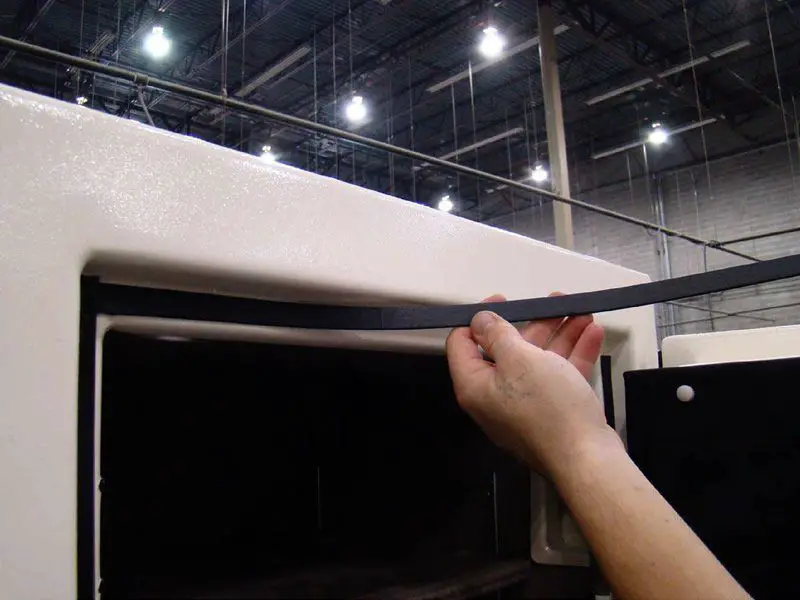
It is highly recommended to choose a gun safe fitted with a Palusol door seal. The reason behind this is that a good door seal will protect your guns and other valuables from moisture. This will prevent rusting and corrosion of your weapons. Another good thing about safes with door seals is that it can protect the interior from flames, smoke, and heat (in case of fire). If you have a safe with full-length Palusol, its heat-activated sealing strip can expand up to 8 times from its normal size to block any heat and smoke coming from the fire.
Lastly, a good door seal protects the contents of your safe from water intrusion during flood. So even if your safe is submerged in the water, the contents can be protected for a few hours or even days (depending on the quality of the door seal).
Mechanical or Digital Locks
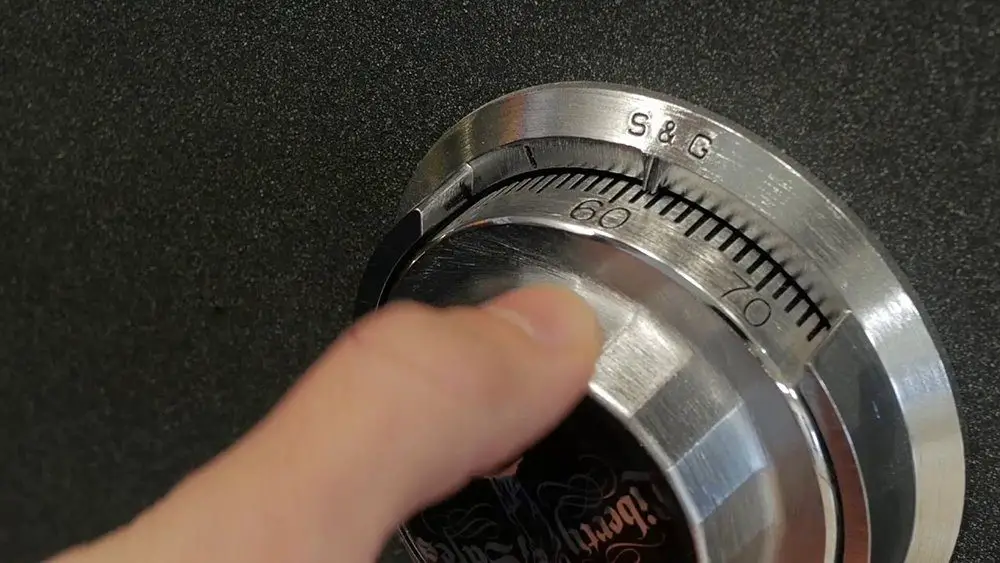
When it comes to safe locks, mechanical locks are more durable compared to digital locks. Rotary locks do not have electronics circuitry that might fail anytime (such as circuitry fault or low batteries) so you are assured that they will always work 24-7. However, digital locks offer convenience and faster access, especially during an emergency. Should you prefer a digital lock, make sure to choose the ones that are of commercial grades.
Bolts and Relockers
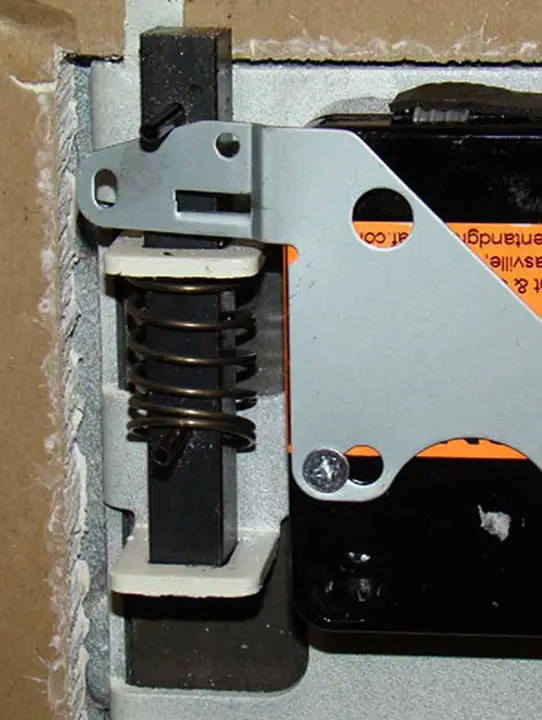
The locking bolts are critical for protecting your safe from prying, drilling, and other forms of attack. When choosing a safe, you should consider the ones with at least two bolts on each of the four sides of the door. High-end safes generally have more bolts which means better protection, such as the one found on bank vaults. Diagonal bolts installed at the corners of the door also make it more robust especially on weak locations vulnerable to prying and drilling.
Relockers are also one of the many great features of a high-end safe. Relockers are made of hardened pins that cannot be easily retracted when triggered during a forceful entry (a burglar will need many hours of drilling when the relockers are activated).
External Hinges
Gun safes with external hinges are highly preferable because it allows you to open the door wider up to 180 degrees. Doors with external hinges are removable which is convenient for transport and servicing. However, hinges (internal or external) doesn’t necessarily make your safe more secure since the quality of your safe will greatly depend on the number of bolts and locking mechanism.
Interior Layout
If you have a collection of long guns such as scoped rifles, we highly recommend a safe larger than its claimed capacity. After all, you don’t want to fit in all your guns inside the safe like sardines – this will make it difficult for you to access the rifle you want while removing the others out of the way.
To make your safe interior-friendly, we recommend buying a rotary rack as well as a rack for your unscoped guns on the door. This might require extra space but it will offer easier access while still being able to store more guns.
You can also build your own rack shelving that fits your guns. For scoped guns, consider having a 3-inch clearance from the sidewalls. For benchrest rifles, the shelf should have 3.5-inch rectangular slots for robust mounting and easier access.
And lastly, consider installing drawers inside your safe. This will help you to easily organize other valuables such as jewelry, revolvers, and other important documents. We also recommend placing a carpet or rubber pad inside the drawer to protect your valuables from scratches.
Interior Lighting
The interior lighting of your safe is a necessity, especially in times when you need to get your guns at night. If your safe doesn’t have one, you can purchase a fluorescent bulb or an LED strip and install them overhead or on the sidewalls. We recommend an LED string since they are less expensive and can be easily bent around the corners where you want illumination.
Fire-Proof Rating
Fire accidents can happen anytime. To ensure that your valuables are protected, it is extremely important to consider a fire-proof safe. Your challenge now is which fire-proof safe gives you the most protection.
With so many various UL rating plus companies claiming a certain rating without actual (or standard) testing, it could be difficult to choose the right one. You want a rating of a gun safe that is tested close to an actual house fire instead of the usual factory test.
We highly recommend a safe built with a UL rating of 350°F for at least an hour (or higher) and a fir cladding placed on all sides of the safe. On top of protecting your safe from burglary, a fire cladding also provides insulation on the solid steel portion of your safe. This will increase your safe’s resistance from heat in case of fire accidents.
Here’s a video about gun safe fire rating myths:
Flood and Moisture Protection
One of the many features most safe owners would overlook is the safe’s ability to protect its contents from flood and moisture. Just like fire accidents, floods can happen anytime and anywhere. If you live in areas that rain a lot or prone to heavy flooding, then you should consider mounting your safe about the ground level. Make sure that your safe is built with premium door seals and that any external holes should be sealed properly. We recommend looking for a door seal with a polymer casket since this will keep the water out from your safe even if it is submerged in the water for up to two feet deep (for up to three days).
Protecting Your Guns from Rust and Corrosion
Burglary, fire, flood, and moisture are not the only threats you should consider. If you truly want to keep your guns in top shape, make sure that they are protected from rust and corrosion!
Anti-Rust Coating
Aside from safes with high-quality door seals, make sure you coat your weapons with rust preventatives. Eezox, BoeShield T-9, and Corrosion X are just some of the best preventatives you can buy in the market. These products are proven to protect guns from rust without a greasy coating.
Gun Socks
We also recommend storing your guns in a gun sock. Bore-Store is just one of the best gun socks you can find in the market. This gun sock is made of thick and synthetic fleece fabric treated with rust preventatives to ensure that your guns stay on top shape. It is inexpensive and works well in protecting your guns against moisture and scratches.
Electric Warming Device
Maintaining the right temperature and humidity inside your safe is very important to lessen the chances of moist air developing inside. Water vapor caused by unregulated temperature promotes rust and corrosion. You can consider GoldenRod that can maintain the interior temperature up to 140°F, 24-7. You can also use a 20-Watt incandescent bulb or long-life fluorescent bulbs to save costs. However, make sure to use only bulbs with small wattage and be sure to keep them away from papers, wood, or fabrics that can easily ignite in high temperatures.
Desiccant Products
Desiccant products offer an inexpensive option to keep your gun safe free from moisture. Try placing desiccant packs inside your drawers, shelves, or ammo cans to protect your guns from rust.
Anti-Corrosion Vapor Emitter
The anti-corrosion vapor emitter (such as BullFrog) is an effective anti-rust device used in the military and NATO to protect weapons from rust and corrosion. You can buy BullFrog strips or stick-on cups to install inside your cabinets. If you have a large gun safe, we recommend using the BullFrog Rust Blocker Shield which offers protection up to 50 cubic feet area.
Gun Safe Quality Ratings
Safes are generally designed for fire and burglary protection (often both). Just make sure that if you really need one, the safe you purchase addresses that need. You don’t want to end up with a safe that keeps your guns and papers from burning in a fire and then have it easily compromised by a burglar with a screwdriver or crow bar. Generally, the two ratings go hand in hand, but that’s not always the case. Some safes designed for guns allow much higher internal temperatures during a fire and would be unsuitable for storing documents without additional protection.
Gun Safe Burglary Ratings
The Underwriter’s Lab (UL) develops and tests many products against standards and rates safes based on several categories. The ratings characterize how much time and the tool types that would be used to get into a safe. The use following burglar-resistant categories:
- Residential Security Container rating (RSC) – net working time of five minutes, on all sides, with a range of tools.
- TL-15 – limited protection against an attack for 15 minutes with common hand tools including electric tools
- TL-30 – moderate protection against mechanical and electrical tools for 30 minutes
- TRTL-30 – 30 minutes of protection against tools that INCLUDE cutting tools and torches
- TRTL-60 – will withstand 60 minutes of attack with tools that include cutting tools and torches
- TXTL-60 – adds capability to withstand attacks including explosives (4 oz. of nitroglycerin per charge and no more than 8 oz. total)
When looking at these times, keep in mind that when they’re tested, the safe crackers get to study the safe’s design and engineering drawings before planning the attack and starting the timer. So unless your burglars have practice cracking safes, it will likely take them longer than the UL listed times. But, it’s a good, standard measure for how tough a safe is to get into via traditional subterfuge.
The following are not the only options, but will give you an idea of the price range that you will pay for protection at the levels above.
Residential Security Container:
TL-15:
TL-30:
Gun Safe Fire Ratings
UL also certifies and tests safes for fire resistance as well. Again, the ratings convey how long and the intensity of fire that can be withstood by the safe. These tests also include testing for explosions during the fire and impact tests (like a collapsing house).
There are ratings for fire endurance testing:
- One-hour rated products – tested at 1700°F
- Two-hour rated products – tested at 1850°F
- Three-hour rated products – tested at 1920°F
- Four-hour rated products – tested at 2000°F
Then, there are also tests for impact that reheat the safe after the impact test to make sure it is still secure.
Learn something? Say thanks by sharing this article.
A Word of Caution about Ratings
[counter num_start=”90″ num_end=”5″ num_speed=”1500″ num_suffix=” minutes” text_above=”A skilled burlgar can open the best home safes in” num_color=”#000000″ text_color=”#000000″]Many large and heavy safes don’t even meet the standards for a Residential Security Container, stipulating effectiveness for 5 minutes of attack. You want your safe to last more than 5 minutes right?
Safes used in commercial businesses with lots of money at stake may only withstand attacks of up to 30 minutes due to the high costs (purchase and installation) of a large and secure safe. All that should let you know that it’s critical to have an alarm and get the police on the way. Because with sufficient time, your safe WILL be opened.
Make sure you read through the marketing hype!
A safe that is “tested to UL TL-15” doesn’t mean that the safe PASSED a TL-15 level test. After all, it could have been tested and failed. The documentation needs to say that the safe earned the certification level or passed testing.
Yikes! Hope your friends don’t have this safe.
Installation
Hopefully, the previous discussion also convinced you that hiding your safe can be just as important as how resilient to attack it is. Any time that is wasted looking for the safe while the cops are on the way makes it more likely that you get to keep your stuff.
You need to consider a few things when installing a safe:
- Hide it out of the way
- Consider building structures around the safe to make it harder to remove
- Anchor it according to the OEM guidelines
Each of these will make it tougher to roll the safe out of the house to a waiting vehicle. From there, it’s off to a quieter location to break into it.
Also make sure you properly attach the safe to the floor or walls, following the manufacturer’s instructions. Otherwise, a burglar may be able to get to more vulnerable sides of the safe like the bottom and back of it.
Adequate Size
Another thing you should carefully consider is the size of the safe. An unfortunate reality is that many people buy a safe that is sized for their current needs. Then as they see the value in storing more and more valuables in the safe, space that was once set aside for guns becomes filled with important documents and jewelry. Or, the gun collection simply grows over time, and you end up storing weapons outside the safe. Obviously, that defeats much of the purpose of having one in the first place. Thankfully, there are some safe accessories you can install to help you out with that problem, too!
Of course, there are a couple of issues working against buying a monster safe as well. For one, it’s tough to find a place to put it. With a very heavy safe, you half to considering the load bearing ability of the location you’re putting the safe too. It may not go crashing through the floor like some cartoon, but a large safe can certainly put stress on floor members and cause cracks over time.
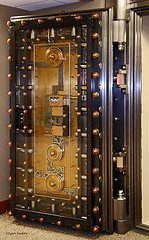
Second, it’ll be a pain to move a big safe. With the mobility of the work force these days, people just don’t stay in the same jobs as long as they used to. So chances are, you’re going to end up moving the safe or trying to find someone to buy it with the house that will value it as highly as you do. Both are not great prospects.
So, you may want to consider a decoy safe for your less valuable guns and another stronger safe for the real treasures that’s really hidden away. When the burglar finds the first stash, he may hit it and not even continue the search, assuming that he’s cleaned you out.
Alternatives to Gun Safes
If you’re looking at the protection you get with a safe and the cost of them, you may wonder if it’s all worth it. For a little more money, you may be able to install a tornado shelter or a safe room and achieve many of the same things or more. You just have to consider what your needs will be.
Here are a few other ideas that might serve the same purpose for a bit more expense:
- Tornado shelter with a reinforced door
- A safe room with a steel exterior and hardened door
- Insurance!
You may be caught off guard by the insurance comment, but if your stash doesn’t include things that you can’t do without, then insurance can cover the replacement. It’s much more suitable for those that move often and don’t want the hassle of relocating a large safe. Just keep in mind that you will likely need an additional policy rider to cover your guns and valuables. And, don’t count on it being cheap either. When you add up the cost of truly covering all of those valuables, spending $5000 on a safe that you’ll keep for 30 years starts to look more reasonable.
A Word on Safe Locks and Quick-Access
With the ever-expanding use of electronics in our lives, it’s only natural for many safes to go the same way. So you’ll see many electronic keypads replacing old combination spin locks.
But, there’s a reason that spin locks are still used to secure the most critical information at the NSA. Quick access safes are more prone to vulnerabilities!
But, they still have a place in the home. For example, near your bed to stash a handgun in case of late-night break-ins. Our review of the Gunvault Multivault GV2000 covers a unit that’s great for quick-access in that scenario.
LOTS OF COMBINATIONS!
A 9 digit keypad needs a really long combo to match up to a 99 digit spin lock which is practically impossible to crack via brute force. Now granted, good electronics can almost eliminate brute force attacks with timed lock-outs on incorrect attempts.
But, it’s something to be aware of.
On the other hand, a spin lock takes a long time to get into, and speed could be important if you only own one safe and not another quick-access unit for emergencies.
Also, spin locks can be made cheaply as well:
Think Twice About Biometric Gun Safes
The cool factor of fingerprint gun safes
So, I’ll be the first to admit that sliding my finger over my safe and the door popping open sounds like a pretty attractive proposition. After all, I can’t forget my fingerprint when I roll out of bed after being woken up to the sound of an alarm going off. And given the advances in technology, the cost of safes that scan your fingerprint have put them within reach of the average Joe. Unfortunately, the price you pay for being cool may be time, one of the most precious commodities during a home invasion.
How does it work?
When you put your finger on the scanner, the sensor reads the high and low points on your fingerprint and compare the reading to the scans that it has saved in memory internally. The longer the scan takes, the more accurate the result of the scan will be. But, as you can imagine, a key factor is the speed of getting your gun out of the safe. So, the engineers that design the safes and software in them have to make a tradeoff. If you give up accuracy, you can get a faster response. But, if you go too fast, you may not let the owner open his own safe without multiple tries with really even pressure across the sensor.
It’s apparent that the technology has been improving quite a bit. First law enforcement started using scanners to replace ink pads and then you started seeing biometric scanners at the DMV and in consumer products. Nowadays, you may even have a laptop with a fingerprint reader on it. If you have used these, you’ll know first-hand that they can be sensitive to where you place your finger, how hard you press down on the sensor, and what other dirt and oils may be on the finger that you use. The best safes today have very consistent operation in a variety of situations. I’ve read quite a few positive reviews of the Barska Biometric Safe. It’s priced pretty reasonably at $170.
Another safe that really stands out if you’re willing to pay more for it is the GunBox Biometric Hand Gun Safe. You can just use a fingerprint to open it, or you can use an RFID bracelet to open it, or a combination of the two. The RFID device will be more reliable and requires less precision than the fingerprint. You just have to get over yourself and wear a bracelet to bed!
How cool is that!?!
This GunBox safe sends you an alert on your phone if somebody tampers with your safe. Follow the link and watch the video on Amazon to see how it works.
So What’s the big deal with fingerprint gun safes?
- TIME – The Barska safe that I mentioned above takes about 2 seconds to open. By my estimation, that’s twice as long as it takes me to get into my keypad safe.
- SECURITY – Since the fingerprint scanners on these safes are on the lower end of those available (unless you’re talking about a high-end safe), they are going to be easier to spoof. If your teen can get inspiration from a Mythbusters ™ episode, lift your fingerprints off of some object in your house, and break into your safe in 20 minutes, then it really isn’t doing you a lot of good. With a combination safe, the time that it would take to open it by going through all of the combinations just isn’t practical.
Now, I’m not saying that you can’t find a good fingerprint gun safe that is accurate, quick, and foils attempts to trick it. What I am saying is that for the same cost as a higher-end biometric safe, you can get a much more solid combination safe.
If you have had experiences with a fingerprint gun safe that led you to a different conclusion, I’d love to hear about it. Just drop me a line below.
So What Features Make the Best Gun Safe?
Let’s review the must-have features that we’ve covered:
- Buy enough UL rated burglary protection to give the police time to be alerted and get to your house.
- Robust attachment to your home and an installation location that makes quick removal more difficult.
- The cost should be proportional to the value of the items you are protecting.
- Big enough to do the job and then some (see our article on the 10 best pistol safes if you’re looking for something smaller).
- Safes with external hinges and an interior height of at least 58 inches. A high interior safe gives enough space for 30-inch barreled rifles as well as top-shelf storage (with slide-out drawers) for your other valuables like documents, jewelry, and handguns.
- Choose a safe that allows customized interiors for scoped guns with long barrels. Safes with rotary gun rack for storing ARs and scoped rifles as well as those with on-door storage systems for storing non-scoped long guns are desirable.
- Rotary dial locks (Mechanical UL Group II ) are still the most durable that will stand the test of time. They require minimal maintenance and work flawlessly for years.
- If you prefer the digital keypad access, make sure to choose a commercial-grade unit (UL Type 1 Commercial-Grade Electronic Lock).
- Choose a safe with at least 8 gauge wall thickness, double-wall, and has a composite door with relockers.
- To protect your valuables in case of fire, the interior should be fire-lined. Your safe should have an internal insulator in between and reinforced with a layer of sheet-rock.
- Safes that are rust-resistant and low gloss are preferable.
- Choose safes with LED mini lights on strings or those with fluorescent lamps installed overhead to allow access during night time.
When you’re shopping for gun safes, you may be taken back by the cost of a good one. But keep in mind, it’s something that will last forever and that you can even hand down to your children as well. So, it’s not like you’re throwing money away. The value will still be there in 20 years if you or your children want to sell it.
Do you have a safe you’d like to recommend? Let us know in the comments below.
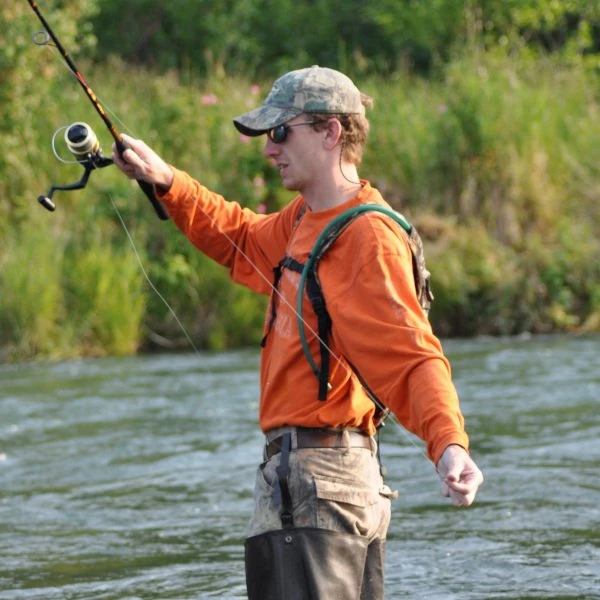
Hi, I’m Jody. I graduated with honors with a Masters of Science in Computer Engineering and have over 15 years of experience working as an engineer with electronics products. I’m a lifelong learner and tinkerer and enjoy automating things around the house so I can solve bigger problems than getting out of bed to check if the garage door is closed . . . like too little sleep!
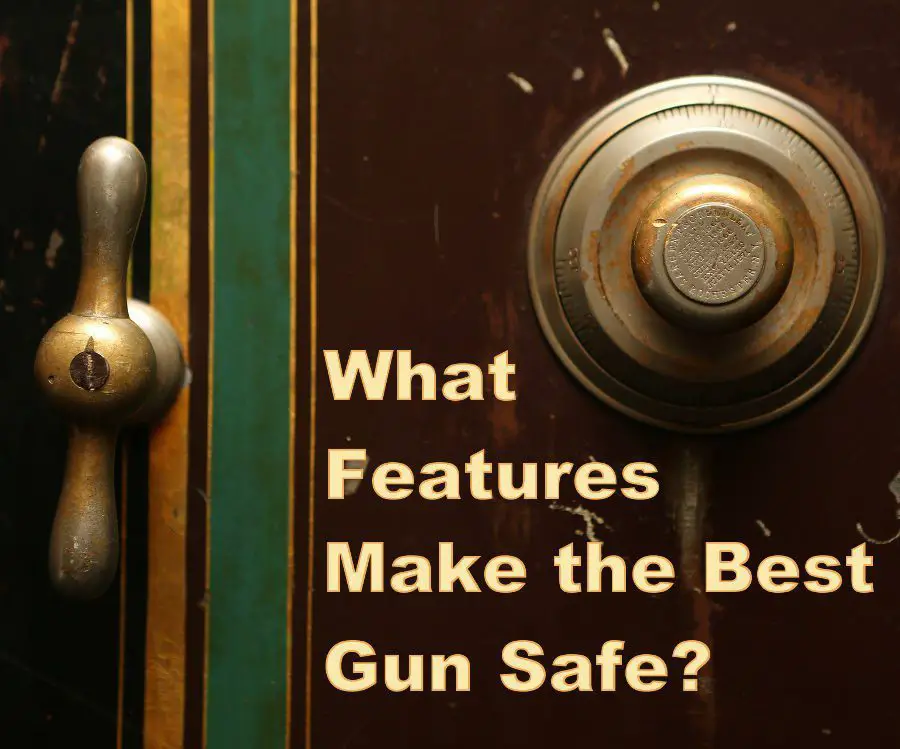

Well written article! No safe is unbreakable that’s correct, but they can be stollen as a whole which might be a worse loose of value!
That’s definitely true, making sure law enforcement is on the way is just as critical as hiding your safe and securing it so that the criminals are still working on getting your stuff when the cops arrive.